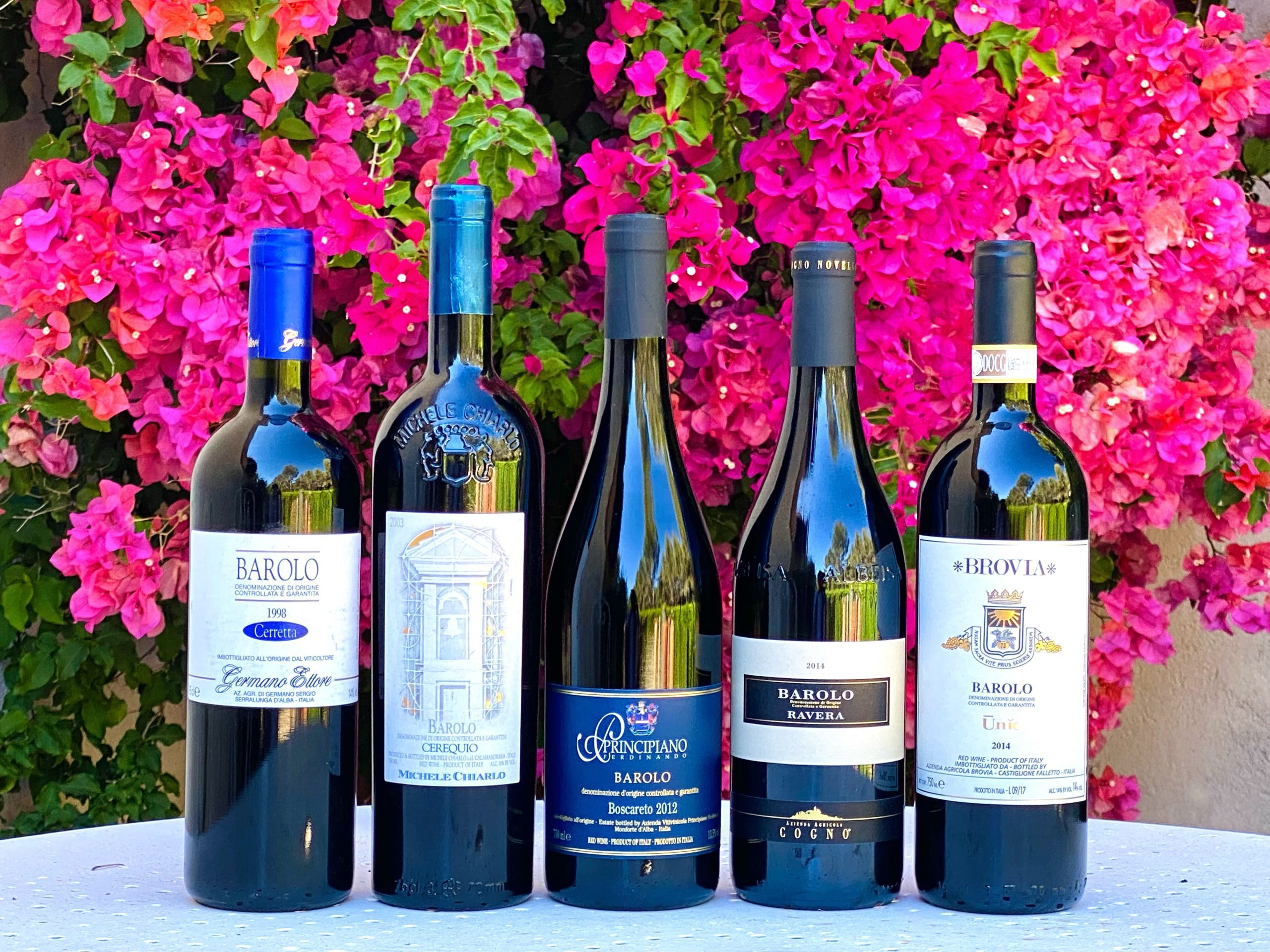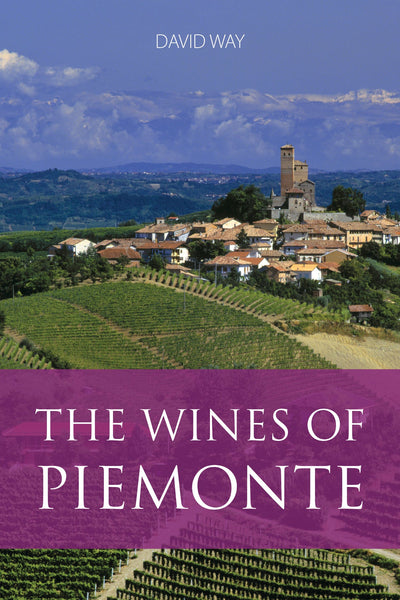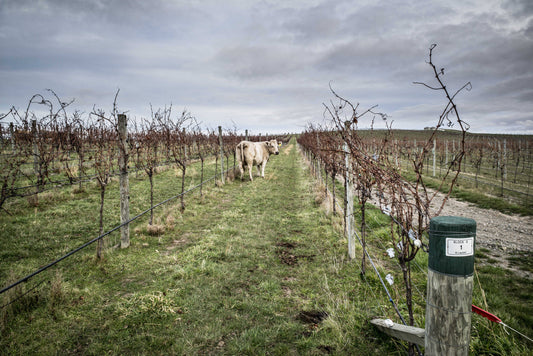If you ask a winemaker to choose a favourite vintage, you’ll likely receive a wry smile and an evasive answer. Each vintage is special, the winemaker will say, and I love them all equally, just like my children. And yet all wines are not born with the same natural advantages. Those from vintages deemed mediocre or just plain bad often fade into obscurity. Little is expected of the problem children born in years of hail, spring frost and disease, when there is too much or too little rain. But can you make a great wine in a bad year? That is the question I asked five top Barolo winemakers from different communes and they all said that you can. Here are the stories of five excellent Barolos from forgotten vintages.
Located just south of Barolo, Novello itself was an overlooked commune until Elvio Cogno’s arrival in 1990. His son-in-law, Valter Fissore, is the current winemaker and he says that ‘to build the reputation of a winery takes four generations. To destroy it you need just two years. If I made wine just for the money then I would make many mistakes.’ This winery’s fame has been built on the strength of the Ravera cru, where the vines are 380 metres above sea level and cool summer nights impart energy and freshness. The marl-dominated soil, meanwhile, lends a savory, mineral profile. ‘The wine never goes to the side of your mouth,’ noted Valter as we tasted. ‘It’s very linear and straight. That is quite a distinctive characteristic.’
Elvio Cogno Ravera 2014: ‘If I have two sons, I can’t say that one is better. Both are great and wine is the same. For sure, there are some that are not the sons I wanted. 2008 and ’14 are examples. The wines are now ageing well but in the beginning people said they were very bad vintages. The critics have become more severe about the vintages and it’s quite frustrating because we fight every day to do our best in the vineyard. In ’14 I worked very, very hard. It was a strange, rainy summer. We didn’t have hail but otherwise it was really a disaster. We were lucky that autumn was good and it saved the vintage. It changed completely my vision of viticulture. I had a lot of experiences in ’14 and I became stronger after that. Now I am not so worried about the other vintages because I learned a lot.’
Valter Fissore
La Morra’s sandy soil gives the wines their trademark perfume, though the famed Cerequio cru is slightly atypical. Michele Chiarlo owns a quarter of the vines planted in this amphitheatre that is shielded from the north wind and makes powerful Barolos similar to those in Serralunga d’Alba, the commune next door. Stefano Chiarlo characterizes the wines as structured, tannic and balsamic, thanks to magnesium in the soil. Aromatic and expressive in their youth, they develop a wonderful palate complexity with cellaring. Stefano recommends a healthy skepticism when reading reports on the quality and character of newly bottled Barolo vintages. ‘Close to the harvest time when you are in the vineyard and you taste the grapes you have a good idea’ he says. ‘Probably better than after you taste the wine in the wood, when it is much more difficult to understand.’
Michele Chiarlo Cerequio 2003: ‘The choices that we made in the vineyard gave a lot of satisfaction because we had never seen those kind of weather conditions before 2003. Not only me but also my father, who arrived in the ’65 harvest. We made the very quick decision to protect the bunches because of the heat, not to touch them too early, and to work the soil. Before we had never done that during the summer. Working the soil gives more oxygenation to the roots and continues the photosynthesis. At the same time, we decided to pick the grapes two weeks early. According to the traditional mentality it was too early but it was the right choice because we saw afterwards that the acidity went down very fast. Obviously, they were very extreme conditions but some journalists believed that there would only be 10 years of evolution and after that the wine would go down. When we open the 2003 now it is still good, still fresh.’
Stefano Chiarlo
Ettore Germano was a legendary grafter of vines in Serralunga d’Alba and his son, Sergio, carries on the tradition of innovation both in the vineyard and the cellar. He now makes four Barolo cru wines, one of which is from a six-hectare limestone parcel known as Cerretta. After some experimentation, Sergio settled on a long maceration of up to 60 days for this cru, with two years ageing in lightly toasted French tonneaux to soften the tannins while retaining freshness and elegance. Although vintage reports provide a general idea of growing conditions, in problematic vintages it is the understanding of Barolo’s unique microclimates that can provide consumers with the best guidance, thinks Sergio.
Ettore Germano Cerretta 1998: ‘It is important to judge the wine ourselves and to decide whether to be proud of it or not. One example is ’98. It was just between ’97, which one critic called perfection in Piedmont, and ’99, with big concentration. Nobody talked about ’98. I am sure that many producers would now say that it is fantastic. The press will write what they heard from people, but it is important to understand that nature is perfect in its imperfection. Now we have fantastic instruments for chemistry, technology, going into space, but for some things there is only the palate for judging. No equipment is sophisticated enough to judge this. Sometimes nature needs time to evolve. I was proud of this wine in the beginning. I remember telling a colleague that I liked the ’98 and he laughed and said, “no problem”. But after 10 years he said I was right. Now I think you can enjoy many ’98s.’
Sergio Germano With Monforte d’Alba winemaker
Ferdinando Principiano called away on urgent business, it was left to Nicolo Abellonio to share his boss’s views. Their flagship wine is the single vineyard Boscareto, made from old vines planted on austere limestone soil. Since 2009 it has been a whole bunch fermentation with the maceration now limited to 25 or 30 days. ‘We do a little pigéage ,’ explained Nicolo, ‘pressing by foot so as not to extract from the stems because when we harvest, the grapes are ripe but not the stems.’ I asked if that means they harvest early, and he replied: ‘For us we harvest when we think we have good balance. If you look at the latest vintages, the winters have been less severe so sometimes the vegetation starts earlier. It’s logical to keep high acidity and a low pH for stability if you don’t want to work too much in the cellar.’
Ferdinando Principiano Boscareto 2012: ‘Boscareto is our most important Barolo and 2012 was not a bad vintage, but it was not considered top. Just good. After a period of closure, when we found it quite tight, it is evolving. In the beginning Ferdinando liked the vintage but he thought it was more limited. Then he changed his mind. This is so interesting and we see it often in the first years that the wine is ageing in the cellar. That’s why we decide what to do with Boscareto after two years of ageing. Sometimes you take the grapes, ferment and you think this will be the best vintage. After one year of ageing, you change your mind. Or vice-versa. The ’12 surprised Ferdinando.’
Nicolo Abellonio
Brovia makes three Barolo cru wines from vineyards near the winery in Castiglione Falletto, another from a parcel in Serralunga d’Alba and a Barolo blend from the younger vines. Winemaker Alex Sanchez’s goal with the crus is elegance, which he tries to achieve by using only the free run juice, without adding the more tannic press wine. Pump-overs are conducted gently, with the help of a rotating plate that acts like a garden sprinkler, bathing the cap without piercing the skins. Alex echoed his peers in warning against prejudging the wines made in difficult years. ‘A good producer only bottles wine that he is proud of,’ he said. ‘As winemakers and wine lovers, we find it interesting to see the different expressions. We love the structure of the ’19, the typicity and depth of the ’13, the elegance, fragility and purity of the ’18. In vintages like ’18 and ’98, the vineyards have expressed themselves in a pure way.’
Brovia Unio 2014: ‘2014 was really a difficult, challenging vintage. We thought that we had not achieved the level to make a single vineyard Barolo and we decided to forget about our five different labels and concentrate on making just one blend, but not in the same way that we make the regular blend. We did not want to make differences among the crus, to make people believe that if we didn’t produce one it was because it was not as important as the others. Using two of the crus and a part of the Brea Vigna where we have a monopoly, we produced a wine called Unio, meaning “together you are stronger”. We didn’t tell anyone which wines we put inside and we are very proud of that. Commercially speaking, in a difficult vintage with not very good press and a new label, it wasn’t easy. But we thought it was the best possible way to keep our quality standards. Some people were suspicious, but now we are very, very happy and the wine is showing well.’
Alex Sanchez
Metaphor and reality converged for two of the winemakers, whose sons were born in the same years as their problematic wines. It was 24-year-old Elia who greeted me at Ettore Germano and explained the vinification process. Unfortunately, I wasn’t able to meet Matteo Chiarlo, who is just 19 and begins his winemaking studies next year, but his father has saved 30 cases of the 2003 so that he can appreciate the family’s achievement. ‘In the perfect weather conditions,’ reflected Stefano, ‘it’s much easier to produce a great wine, like in ’10 and ’16. But in a difficult vintage, the sensibility of the people makes the difference.’
Andrew James is a professor of English literature at the School of Commerce at Meiji University in Tokyo, Japan. He is currently on sabbatical leave in France at Université Grenoble Alpes in order to write a book on Bandol wine. His great interest as a wine researcher is understanding the evolution of wine-speak, and the reflection of culture in wine language.




